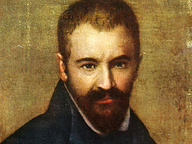Hayez. L’officina del pittore romantico

Dal 17 October 2023 al 1 April 2024
Torino
Luogo: GAM – Galleria Civica d'Arte Moderna e Contemporanea
Indirizzo: Via Magenta 31
Orari: da martedì a domenica: 10.00 - 18.00 Lunedì chiuso Il servizio di biglietteria termina un’ora prima della chiusura
Curatori: Fernando Mazzocca ed Elena Lissoni, In collaborazione con l'Accademia di Belle Arti di Brera
Enti promotori:
- Fondazione Torino Musei
- GAM Torino
- 24 ORE Cultura – Gruppo 24 ORE
Costo del biglietto: Solo mostra Intero € 13 | Ridotto € 11 Mostra+museo Intero € 17 | Ridotto € 15
Telefono per informazioni: +39 011 0881178
E-Mail info: gruppiescuole@tosc.it
Sito ufficiale: http://www.gamtorino.it
Aperta al pubblico dal 17 ottobre 2023 al 1° aprile 2024, l’esposizione “Hayez. L’officina del pittore romantico”è organizzata e promossa da Fondazione Torino Musei, GAM Torino e 24 ORE Cultura – Gruppo 24 ORE, a cura di Fernando Mazzocca ed Elena Lissoni,in collaborazione con l’Accademia di Belle Arti di Brera, da cui proviene un importante nucleo di circa cinquanta disegni e alcuni tra i più importanti dipinti, molti dei quali si trovavano nello studio del pittore, per quarant’anni professore di pittura all’Accademia.
Oltre alle opere inedite o poco viste, si potranno ammirare in mostra alcuni dei capolavori più popolari, come La Meditazionedei Musei Civici di Verona - Galleria d'Arte Moderna Achille Forti e l’Accusa segreta dei Musei Civici del Castello Visconteo di Pavia, cui è accostato Il Consiglio alla Vendetta, prestigioso prestito proveniente da Liechtenstein. The Princely Collections, Vaduz–Vienna.
Attraverso dieci sezioni in successione cronologica, il percorso espositivo inizia dagli anni della formazione tra Venezia e Roma, dove Hayez ha goduto della protezione e dell’amicizia di Canova, fino alla prima affermazione a Milano e alle ultime prove della maturità. Una speciale sezione focus è dedicata ai disegni per la Sete dei Crociati, la sua opera più ambiziosa e impegnativa, che il pittore aveva programmato come il suo capolavoro, eseguita tra il 1833 e il 1850 e destinata al Palazzo Reale di Torino, dove si può ancora ammirare. La mostra rievoca l’intensa vicenda biografica e il percorso creativo dell’artista, indiscusso protagonista del Romanticismo.
“Pittore civile”, interprete dei destini della nazione italiana, capace di estendere il respiro della sua pittura dalla storia all’attualità politica, è stato anche tra i più grandi ritrattisti di tutti i tempi, che ha saputo interpretare con la sua produzione lo spirito della propria epoca.
Cantore della bellezza, dell’amore e dei valori risorgimentali, nella sua lunga vita è stato protagonista di cambiamenti epocali, testimoniando il passaggio dal Neoclassicismo al Romanticismo. Celebrato da Giuseppe Mazzini come vate della nazione, ha condiviso con Manzoni e Verdi gli stessi ideali stringendo con loro un rapporto unico, di amicizia e di intesa culturale. L’Italia risorgimentale si è riconosciuta nel suo linguaggio, che ancora oggi riesce a comunicare sentimenti e valori universali, anche attraverso una dimensione civile che attualizza la storia.
La novità di questa mostra sta nel mettere in rapporto per la prima volta i dipinti e i disegni, che ci consentono di ricostruire e di comprendere il suo procedimento creativo, introducendoci nel suo atelier. Nell’opera di Hayez, che si considerava l’ultimo rappresentante della grande tradizione della pittura veneta e che si era formato sullo studio di Tiziano e dei pittori veneziani del Quattro e del Cinquecento, il disegno può sembrare a una prima analisi secondario rispetto al colore. I suoi contemporanei rimanevano colpiti dal suo particolare modo di procedere basato sull’estro del momento, con continui ripensamenti, anche e soprattutto in corso d’opera, che in molti casi sono riconoscibili persino ad occhio nudo. L’eccellenza e la singolarità di questa tecnica costituiscono il fascino e la forza di una pittura ammirata sia dal pubblico che dalla critica.
Ma di Hayez si conoscono anche centinaia di disegni - la maggior parte dei quali conservati all'Accademia di Belle Arti di Brera - il più delle volte tracciati con un gesto rapido e immediato, quasi fossero appunti visivi da impiegare poi nella creazione delle composizioni, e solo in rarissime occasioni riportati dettagliatamente nelle grandi dimensioni per la successiva traduzione su tela. Oltre agli "schizzi, pensieri fermati rapidamente, studi" sopra citati, che costituiscono un’eccezionale testimonianza del metodo di lavoro del pittore, l’artista ha lasciato una raffinatissima produzione di d'après: disegni e acquerelli che riproducono fedelmente alcune delle sue opere più celebri - verosimilmente destinati in dono ai collezionisti più affezionati - e che hanno costituito un formidabile strumento di diffusione delle sue invenzioni.
“Francesco Hayez, nato a Venezia nel 1791 e testimone da bambino della caduta dell’antica Repubblica, ha trascorso quasi tutta la vita e ha raggiunto il suo successo a Milano, dove è scomparso nel 1882, carico di anni e di gloria come un novello Tiziano, il pittore cui amava paragonarsi. Nella sua lunghissima vita, quasi un secolo, è stato dunque protagonista di cambiamenti epocali, testimoniando il passaggio dal Neoclassicismo al Romanticismo, di cui è stato uno dei creatori, alle nuove istanze realistiche affermatesi dopo l’Unità d’Italia. Non solo per la sua arte, ma anche per le idee politiche è da considerarsi, insieme a Manzoni e Verdi, tra i Padri della Patria. Fondamentale è stata la sua formazione a Roma con Canova, che lo ha sostenuto con la convinzione che diventasse l’artista capace di riportare la pittura italiana alla sua grandezza perduta, così come lui aveva fatto in scultura. Questo merito gli è stato riconosciuto dai suoi maggiori sostenitori, come Stendhal che lo considerò ‘il maggiore pittore vivente’ e Mazzini che lo consacrò come l’interprete delle aspirazioni nazionali. La sua è stata una vita eccezionale sia dal punto di vista personale, essendosi riscattato dalle umilissime origini e dall’abbandono da parte della sua famiglia, sia sul versante di una strepitosa carriera che lo ha visto dialogare con i grandi artisti del suo tempo, cultori, letterati e musicisti. I suoi moltissimi amori e un grande slancio vitale sono documentati dalla sua pittura che ha espresso una serie di valori universali, celebrando la bellezza femminile e la forza dell’amore, come nella serie dedicata a Giulietta e Romeo” - commenta il curatore Fernando Mazzocca.
La mostra è accompagnata dal catalogo “Hayez. L’officina del pittore romantico” edito da 24 ORE Cultura, disponibile presso il bookshop della mostra, nelle librerie e online.
SCARICA IL COMUNICATO IN PDF

-
 Dal 8 November 2025 al 11 January 2026
Venezia | Museo Correr
Dal 8 November 2025 al 11 January 2026
Venezia | Museo Correr
CARATTERI. Calligrafia e tipografia: Corea del Sud e Stati Uniti
-
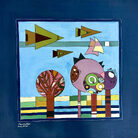 Dal 8 November 2025 al 22 February 2026
Brescia | Museo di Santa Giulia
Dal 8 November 2025 al 22 February 2026
Brescia | Museo di Santa Giulia
Material for an Exhibition. Storie, memorie e lotte dalla Palestina e dal Mediterraneo
-
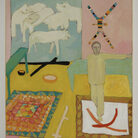 Dal 8 November 2025 al 18 January 2026
Perugia | Perugia, Spoleto e Gubbio
Dal 8 November 2025 al 18 January 2026
Perugia | Perugia, Spoleto e Gubbio
Mimmo Paladino. Antologica
-
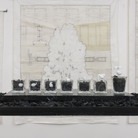 Dal 7 November 2025 al 25 January 2026
Roma | Museo Carlo Bilotti Aranciera di Villa Borghese
Dal 7 November 2025 al 25 January 2026
Roma | Museo Carlo Bilotti Aranciera di Villa Borghese
Silvia Scaringella. Deus sive natura
-
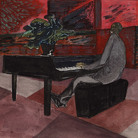 Dal 5 November 2025 al 1 March 2026
Asti | Palazzo Mazzetti
Dal 5 November 2025 al 1 March 2026
Asti | Palazzo Mazzetti
PAOLO CONTE. Original
-
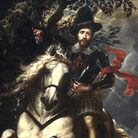 Dal 28 October 2025 al 15 February 2026
Brescia | Pinacoteca Tosio Martinengo
Dal 28 October 2025 al 15 February 2026
Brescia | Pinacoteca Tosio Martinengo
Peter Paul Rubens. Giovan Carlo Doria a cavallo
